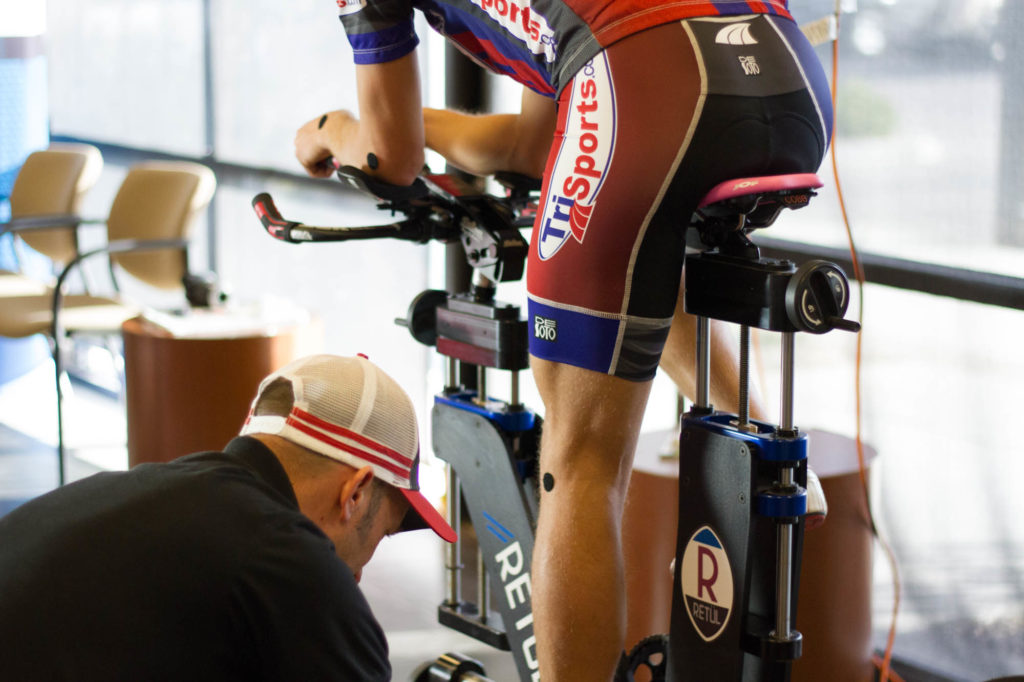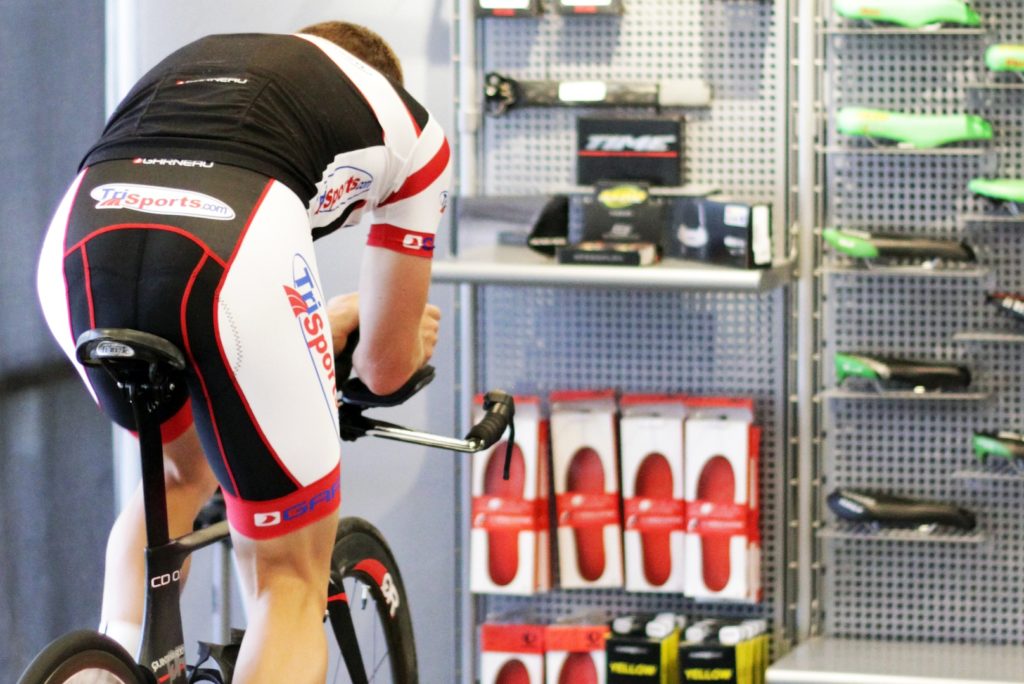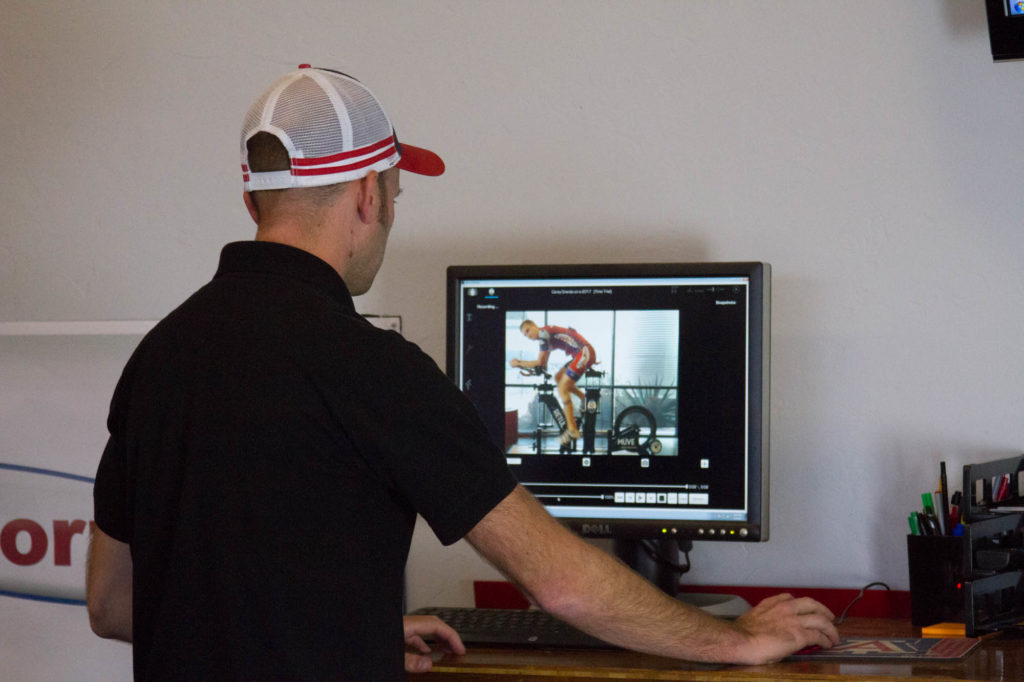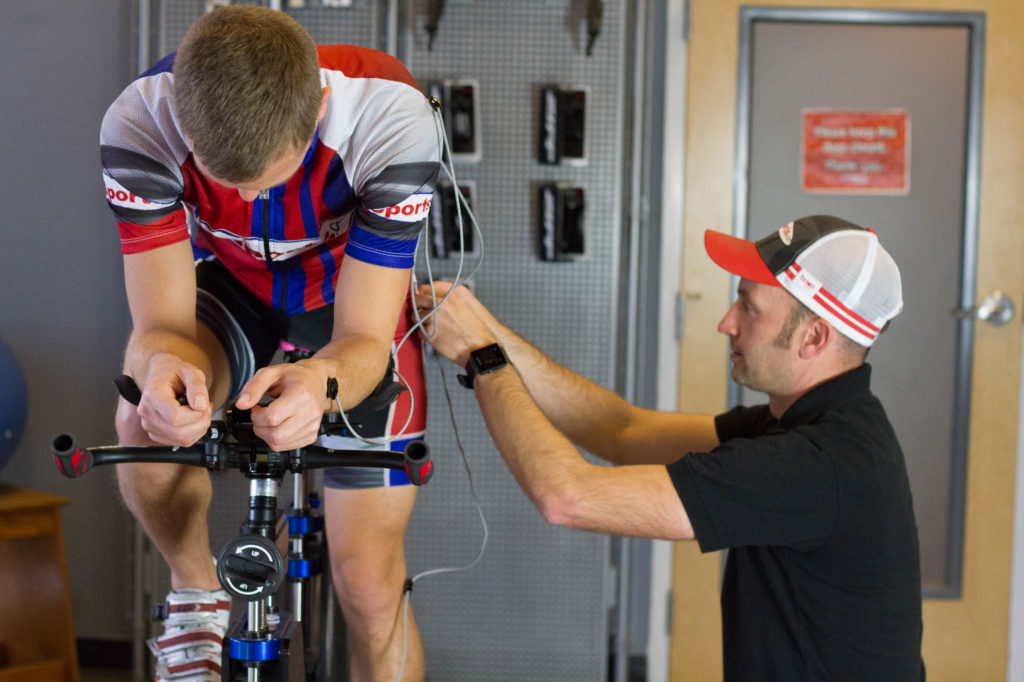Written by James Haycraft
This title is a bit misleading, as the reader may think I mean something along the lines of “aerobic fitness” gainz made in training. Au contraire, mon frère. Today I am talking about getting fit in the context of getting a bike fit. My title missed that crucial middle word for the sake of sucking you in and getting you interested.
Triathlon fitting is both hugely overrated and hugely underrated at the same time. Paradoxical, you say? I agree that triathlon fitting is a bit of a paradox. It’s overrated in the sense that there are too many bad fitters out there yelling about how important it is for you to come see them and pay for a multi-hundred dollar fit before choosing a bicycle without realizing that they are bad fitters. You’ll also see many athletes crowing about their amazing fit and suggesting that a fit with their guy or gal is imperative to your success as a bicycle rider.
Are all fits created equal?
No sir. 90% of fitters who partake of the triathlon business segment are bad. I am using hyberbole and exaggeration for the purpose of making a point, so stay with me for a bit. Too often fitters focus on hitting numbers and angles that they have read out of a book or been taught in a one-day class by someone who has been taught in a three-day class. They are fitting a system and not an athlete. Just like coaches who simply coach a program and not an individual, these types of fitters are to be avoided at all costs both for the sake of your wallet and your triathlon fit.
Getting the right fit
Now, on the other hand, good triathlon fits are incredibly underrated. A fit with someone that understands aero fitting in general and its related principles and goals who also understands you as an athlete – your injury and race history along with your short and long term goals – AND has an ability to understand bicycle fit as a system insofar as it relates to your bike is an invaluable tool in your success as an athlete.
Let’s be frank: I don’t see any point in buying a triathlon bike if you’re not going to use it for its intended purpose: moving efficiently in straight lines. The only reason people buy or upgrade triathlon bikes is to be more competitive or more efficient. You may say that you bought it to be more comfortable in your triathlon racing, but that really just means efficient. A tri bike is designed completely around the philosophy of making you as a rider more aerodynamic for long periods of time while remaining comfortable. Let’s not forget that there are several balls to juggle in a triathlon fit:
- Sustainability: This is key and often forgotten in the days of wind tunnel testing and a market that has been inundated with marketing catch phrases like “saves 3 watts” or “uber aerodynamic sleeves” and so on ad nauseum.
- Efficiency: This means a mix of being fast (aerodynamic) while also being powerful. A good fitter is playing with the different demands of being aero and powerful as it relates to the athlete’s race goals and history.
- Adjustability: I’ve changed this third one quite a bit over the years, but currently I think this is a good third ball to juggle. Many bikes these days have a specific (and limited) range of adjustability that comes into play at times when a fitter is trying to optimize an athlete’s position to a bike; again, keeping in mind the context of that athlete’s dynamic. Or if the morphology of that athlete is such that they are an outlier (e.g. extremely long and low, very tall, very short, super long legs with super short arms, etc.) finding them a bike in general makes a fitter’s job more…ummm, dynamic and interesting.
So in recap, the whole point of a tri bike is to be more efficient. Long story short, it’s my guiding ethos in fitting someone to a tri bike. Take that for what it’s worth…
How do we do that, you might ask?
Well, a good triathlon bike fit that juggles those three balls successfully starts entirely at the saddle. If you ride with a traditional saddle (i.e. think: it has a single nose), I can tell you that you are likely not as comfortable or as efficient as you could be. The original triathlon saddles were basically just more padded versions of their road saddle brothers and sisters. You were supposed to scoot your hips forward, “roll” (I’ll use that word a lot from now on) your hips forward and basically perch on the nose of the saddle. Doing this correctly allowed you to have an aerodynamic position. It was not, however, particularly comfortable or sustainable. Most people that still use those types of saddles have what has been termed (I’m borrowing this from my coach, David Tilbury-Davis) a “pooping dog” position; you don’t have to try hard to imagine what that looks like. This can generally lead to lower back discomfort, SI joint issues, back/shoulder fatigue, among other issues.
Ideally, you sit correctly on a noseless saddle (think ISM Adamo, Cobb JOF, Fizik Tritone, Dash, Specialized Sitero, etc.) which supports your bony parts, your seat bones, and leaves your soft tissue be, allowing your pelvis to “roll” forward. Think perching your butt vs. sagging your butt, flattening out your lower back and relieving it of the weight of your entire upper body. You want a position that supports you at your seat bones, elbows, and feet all using mostly bony support. The less muscular tension you have to apply to relax in your aero bars, the more sustainable that position will be long-term, both in terms of years of racing and hours of racing.
Postural coaching cues
Postural guidance, as I’ve dabbled in above, may be ignored by many of the fitters I’ve encountered. Most athletes, including myself, need to be told what to do and ideally shown what to do. Some have good kinesthetic awareness, but some do not, so either video feedback post-fit or ideally some sort of immediate and direct feedback allows them to make the postural adjustments that the fitter is hopefully suggesting and guiding them through. Many athletes are often surprised when a position that is more aero is actually more comfortable. Allowing your body to breathe so to speak (i.e. making your fit longer horizontally and a bit lower vertically) can often be a complete game changer for athletes who don’t even really think about triathlon cycling as being about going fast or being aero. But it can be a very fortunate byproduct!
Optimized fit for increased performance
A good triathlon bike fit is often mentioned as a way to aid your run, which – I believe – is definitely true, although I believe it’s true for slightly counter-intuitive reasons. Let’s say, for example, that you have a position on the bike that is not particularly optimized (i.e. not efficient using our jargon from above) and you expect a roughly six hour bike split at IRONMAN Arizona. Well, with a good bike fit that yields a more efficient and aerodynamic position while still being sustainable by you, the rider, could possibly take 20 minutes off your time on the bike using the same effort or watts as you were originally planning. So all of a sudden you get to the run having worked out less than you would have before. There is less stress on your body and you’ve endured one third of an hour’s less working out so you obviously get to the run fresher than you would have otherwise. I am not completely sold on the idea that a good bike fit changes certain muscle engagement (although typically there is more glute and quad usage in an optimized fit) such that it affects your run, but that could be argued as a positive as well.
What to expect from your fit
I think, at a minimum, you should expect a couple of things out of your bike fit and the fitter. The fitter should be able to explain his reasoning behind every single change he or she makes to your bike and posture. There should be purpose and confidence to their actions and guidance. They should listen to you and understand your goals and have the ability to translate that into what you want out of your bike and your fit on that bike. As far as outputs go (as in, if you are not getting fit on an actual bicycle but are instead fit on a “fit bike” with the goal that you will buy a bike later using that fit), you should expect numbers that describe your saddle position (i.e. how high is it and how far ahead or behind is it as those numbers relate to the bottom bracket) and cockpit position (i.e. where the arm pads are in relation to the bottom bracket, called “x” and “y” or armpad stack and reach) as those will place those items (the most critical items of a bike fit) in “space” and any competent fitter should be easily able to translate those numbers onto a real bike or adjust your bike accordingly. Ideally, the fitter can also explain those numbers to you in such a way that you understand them and can appreciate their meaning as it relates to your fit now and in the future.
So in summary, a good triathlon bike fit starts at the saddle and contains postural and fit coordinate guidance that allows an athlete to better understand themselves on a bicycle and makes them more efficient on their bicycle as well, ideally leading to a better bicycling experience in triathlon!
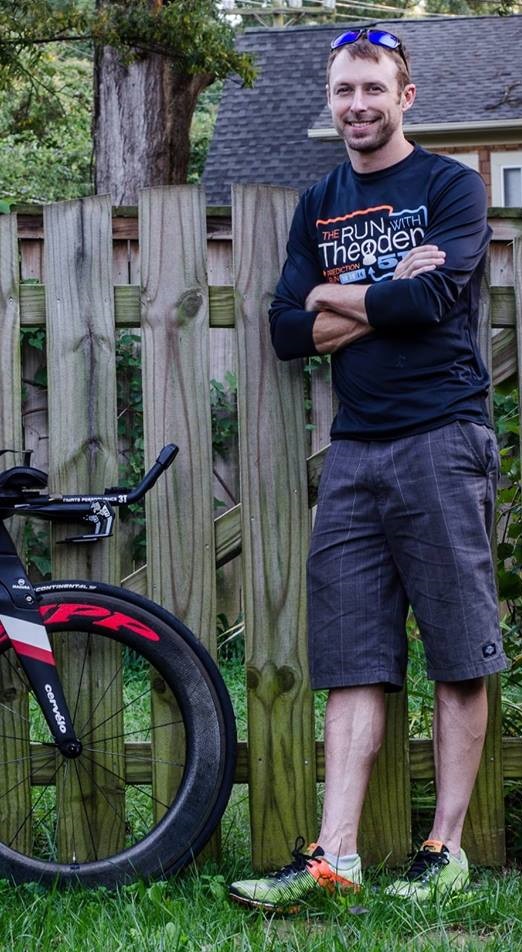 About the Author: James is a recent transplant to the southwest who has spent more money during his time in triathlon than he’d care to admit. An adult onset triathlete, he has had the privilege to race in the professional field before realizing that they are simply too good for him and is now back to the age group ranks, where he has discovered a love for all things off-road and has (temporarily, most likely) forsaken his road-going ways in favor of getting dirty.
About the Author: James is a recent transplant to the southwest who has spent more money during his time in triathlon than he’d care to admit. An adult onset triathlete, he has had the privilege to race in the professional field before realizing that they are simply too good for him and is now back to the age group ranks, where he has discovered a love for all things off-road and has (temporarily, most likely) forsaken his road-going ways in favor of getting dirty.

